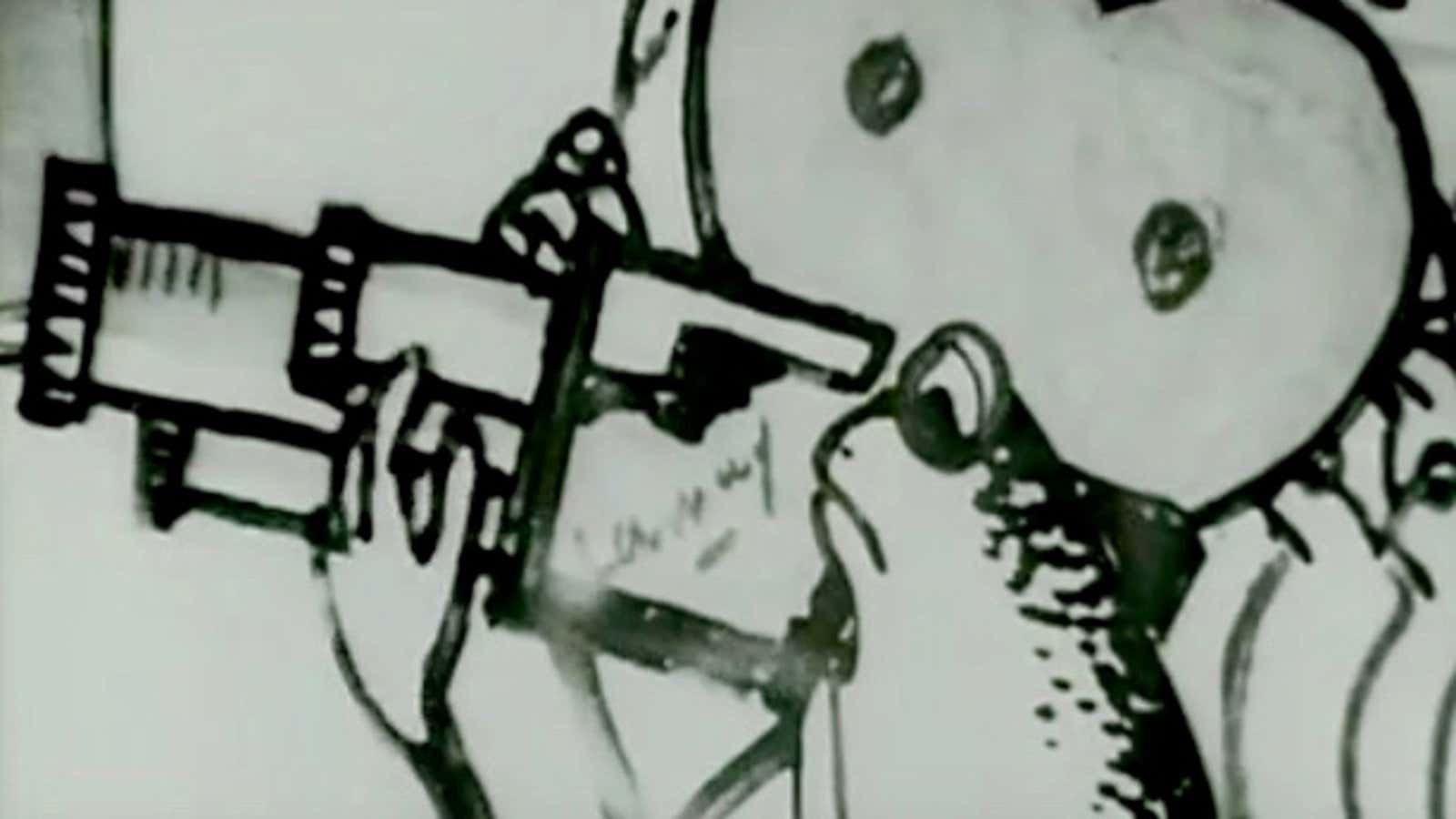A film more than fifty years old and less than five minutes long has a message that would not be out of place in Africa today.
Bon Voyage Sim, made in 1966 by Nigerien filmmaker Moustapha Alassane, is one of the oldest African animated films. The satirical story of a country of upright toads is part of a rich history of classic animation that is largely ignored, even as the continent’s animators make great strides in on-screen representation.
Overlooked for years by lovers of more traditional classic African cinema, Alassane’s work has now earned him the title the “Father of African Animation” in many circles. Active at the same as the “Father of African Cinema” Ousmane Sembène, Alassane’s work did not conform to the social realism that characterized the so-called golden years of early francophone film.
“It is only in the past decade or so that his films have come to be seen as ‘lost classics,’ as what was previously considered their ‘impudence’ is now being claimed and adopted,” writes (pdf) Sada Niang, a professor specializing in classic African cinema.
Born in N’Dougou in 1942, Alassane abandoned a career as a mechanic to become filmmaker in the heady early days of Niger’s independence. He trained with French filmmaker and documentarian Jean Rouche (who shot mostly in West Africa, collaborating with local filmmakers) before winning a scholarship to the National Film Board in Canada. There he learned the tricks of mid-century animation from Canadian Norman McLaren, known for hand-drawing his frames straight onto the celluloid film.
Alassane was always occupied with telling the stories of his own country, using animation as a form of satire to comment on the changes he witnessed in Niger and the post-independence politics on the continent. Instead of people, he preferred to use toads as his protagonists. Not just fun to draw, Alassane’s toads were a metaphor for politically sensitive topics while drawing on traditional fables.
Released in 1966, Bon Voyage Sim is as relevant today as it was when it was first released. Mostly silent, the film is set in a country of upright toads where Sim, the president, lives a lavish life and spends half his time outside of the country, returning in time to name the new university after himself. On his return from his latest trip, Sim is ousted.
To dig through Alassane’s archives of more than 30 films is to relive a period of optimism and playfulness for Niger. There is the stop-motion Samba le Grand, the story of a chief who defends his village and ascends to greatness. Alassane also worked in the real world, directing films like Return of an Adventurer, a 1966 comedy centered on a young man returning to his village in Niger, carrying clothes that he has brought with him from the US. The results of this culture clash plays out like a comical Western in an arid Nigerien farmland.
Described in a documentary of his life as an “indefatigable adventurer into African cinema,” Alassane always experimented with technologies available to him, built his own equipment and searched for new ways to tell old stories. Alassane’s studio in Niamey, where he lived until his death in 2015, is something of a museum of the golden age of Nigerien cinema and the continent’s earliest ambitions of creating the dreamscape of animation.
